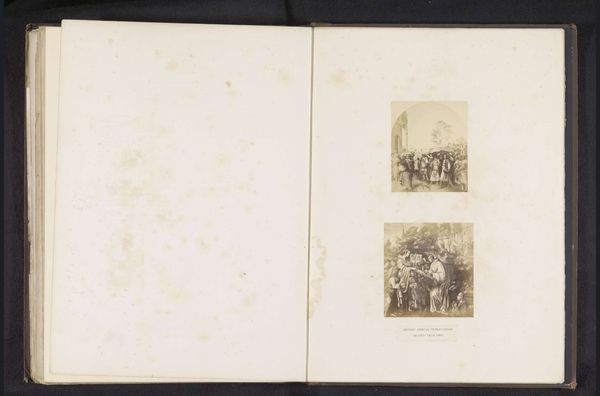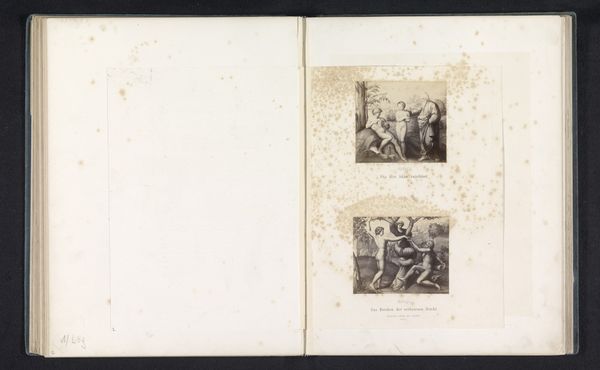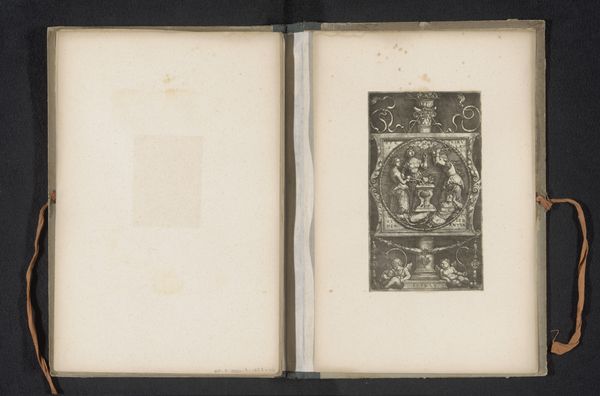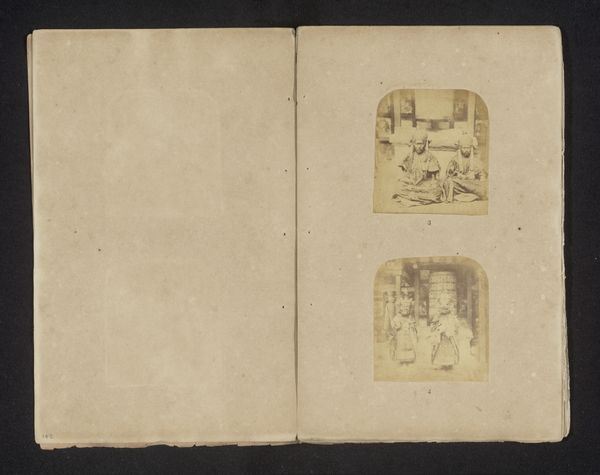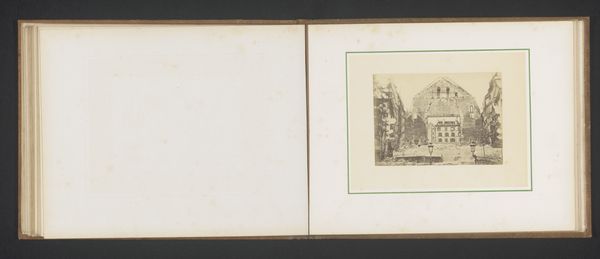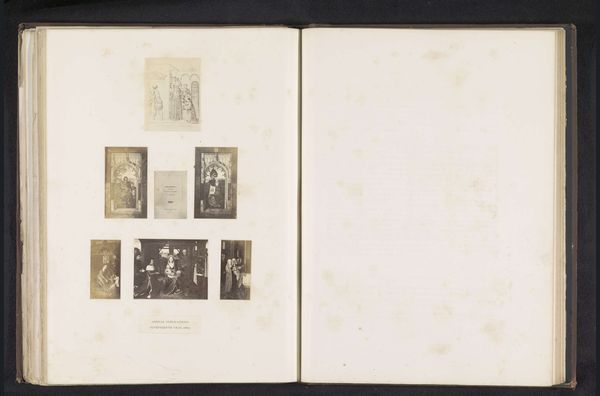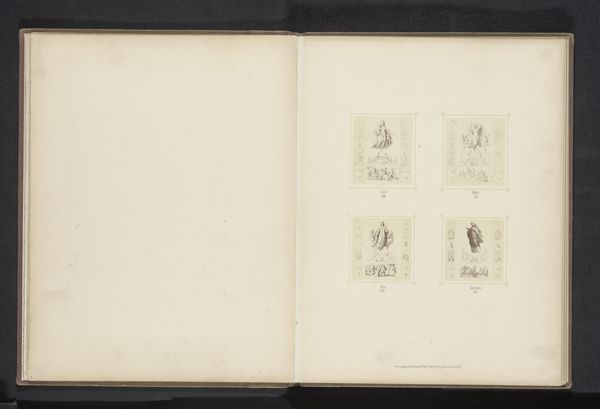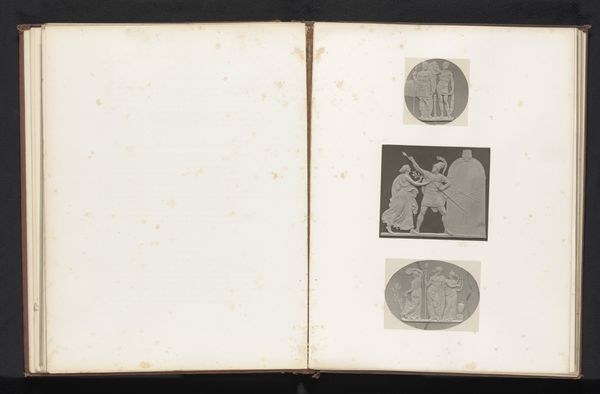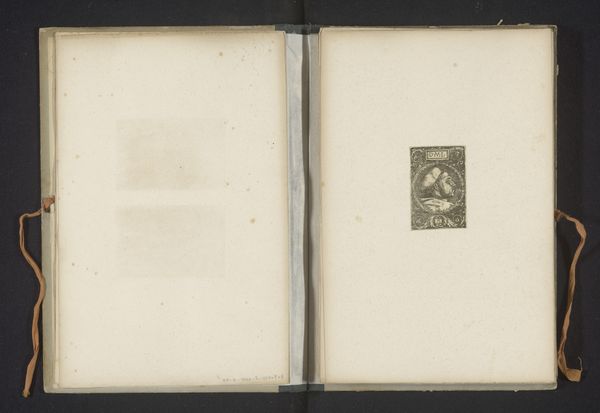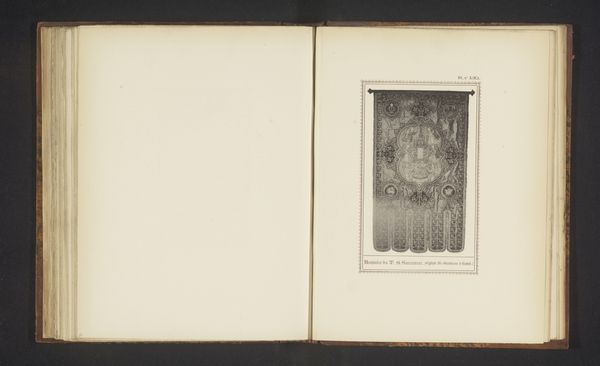
Drie fotoreproducties van een publicatie door de Arundel Society met freco's van Rafael en Ghirlandaio before 1869
0:00
0:00
print, paper, photography
# print
#
paper
#
11_renaissance
#
photography
#
italian-renaissance
Dimensions: height 378 mm, width 290 mm
Copyright: Rijks Museum: Open Domain
Editor: This is "Drie fotoreproducties van een publicatie door de Arundel Society met freco's van Rafael en Ghirlandaio," predating 1869. They're prints, on paper, made from photographs. What immediately strikes me is the arrangement of these reproductions on the page itself. How do you interpret their placement and relationship? Curator: The arrangement presents a visual dialogue between varying styles and spatial depths. Observe how the circular forms at the top and bottom create a framing effect, drawing the eye toward the more expansive scene in the middle. This juxtaposition isn't arbitrary; it structures the viewer's journey. The contrast between the compressed, decorative medallions and the more perspectivally-driven central image invites consideration. How does the tonal range influence your reading of each individual image? Editor: I notice that the tonality seems quite similar across the three images despite depicting such different frescoes. The prints render the textures of the original frescoes into something much more unified, like a historical document more than an artistic statement. Curator: Precisely. Consider the function of reproductive prints. The Arundel Society sought to disseminate Italian Renaissance art. These photographic reproductions flattened the tactile nuances of the original frescoes, standardizing them into reproducible formats. Therefore, one must view these reproductions, first, as aesthetic objects that, through material, compress space in the frescoes they represent. Do you find the prints affect how you value the frescoes they reproduce? Editor: It definitely prompts a lot of consideration about medium and presentation, and the limitations and possibilities of representing other artwork! Curator: Absolutely. It emphasizes the act of viewing, the construction of the gaze, and how artistic intent is inevitably mediated through material forms and contexts. Thank you for those astute observations. Editor: Thank you. That reframing offers a fresh perspective.
Comments
No comments
Be the first to comment and join the conversation on the ultimate creative platform.
